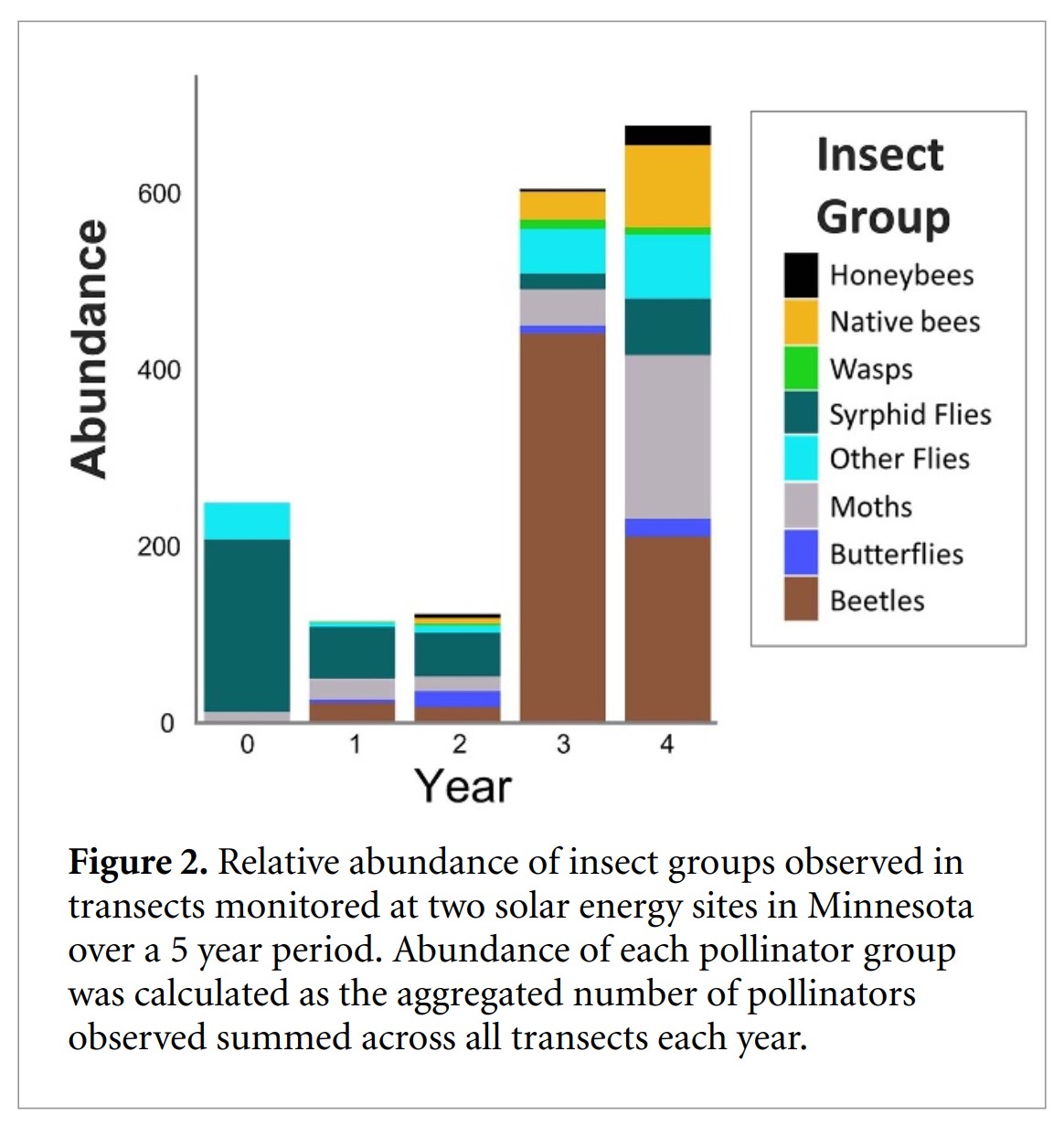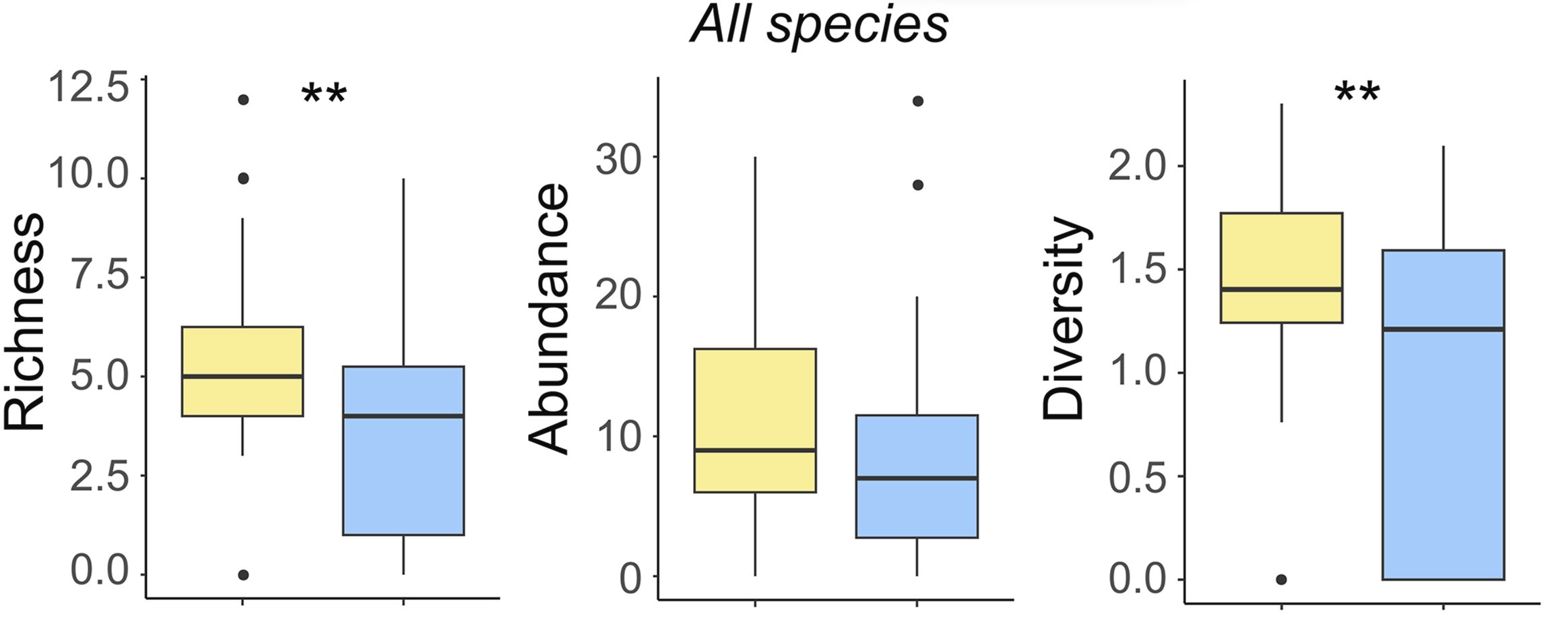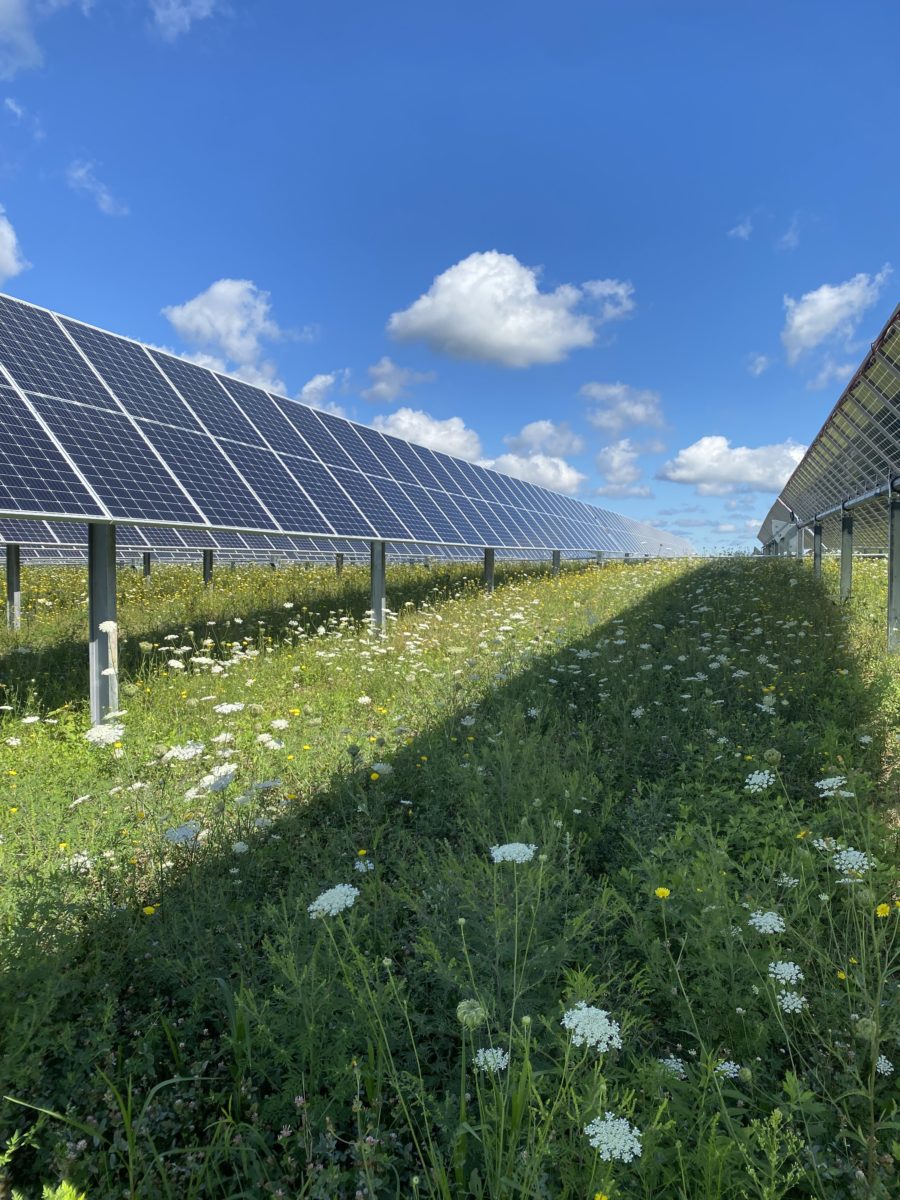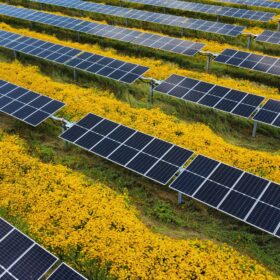It’s becoming increasingly evident that the integration of local grasses and flowers into solar power facilities, whether within the rows of modules or in the spaces between extensive solar panels arrays, enhances the value of neighboring agricultural operations. This growing body of knowledge empowers civil engineers and land management professionals to design solar facilities that not only coexist with but also complement the landscapes – often farmlands – they are situated in.
Consider this: By replacing corn-based energy with solar agrivoltaic systems, the U.S. could meet its entire electricity demand, as solar panels generate about 200 times more energy per acre than corn.
As we dive into this subject, it’s worth noting that solar panels can cultivate microclimates, boosting the grasses consumed by cows and sheep by up to 90%. Adding to this, a recent study of solar facilities managed by Enel revealed a tripling of insect life over five years, with bee populations soaring twentyfold. These solar adjacent insect populations have also been observed significantly contributing to pollination in nearby soybean farms.

The study documented 509 observations of pollinators and beneficial insects across 52 unique observation periods between 2019 and 2022, aligned with the soybean bloom period. Among these, 23 were bees, including 14 native bees and 9 honeybees. Dominating the insect population in soybean fields, syrphid flies accounted for 70% of observed insects, providing natural pest control through their larvae, which voraciously consume soft-bodied pests like aphids, and the adults contribute as excellent pollinators.
In Minnesota, solar power facilities were purposefully designed to support insect populations, ultimately benefiting adjacent agricultural crops, such as soybeans; the nation’s second-largest crop.
In California’s almond orchards, sprawling over 1.3 million acres, retrofitting solar farms with pollinator habitats could yield up to $264 million in annual benefits to farmers. This technique can offset significant costs, like the hefty $400 per acre fee farmers incur for bee pollination services during the bloom season.
Still, the benefits extend beyond financial gains. An analysis of thirty-two solar facilities in Slovakia found a statistically significant increase in the richness, abundance, and diversity of various bird species. The study suggests that solar facilities might offer unique wintertime habitats for birds, thanks to the shelter provided by solar panels.

As the integration of solar power facilities into rural and agricultural landscapes progresses, the potential for these installations to become integral, beneficial components of the landscape becomes increasingly apparent.
This content is protected by copyright and may not be reused. If you want to cooperate with us and would like to reuse some of our content, please contact: editors@pv-magazine.com.








By submitting this form you agree to pv magazine using your data for the purposes of publishing your comment.
Your personal data will only be disclosed or otherwise transmitted to third parties for the purposes of spam filtering or if this is necessary for technical maintenance of the website. Any other transfer to third parties will not take place unless this is justified on the basis of applicable data protection regulations or if pv magazine is legally obliged to do so.
You may revoke this consent at any time with effect for the future, in which case your personal data will be deleted immediately. Otherwise, your data will be deleted if pv magazine has processed your request or the purpose of data storage is fulfilled.
Further information on data privacy can be found in our Data Protection Policy.